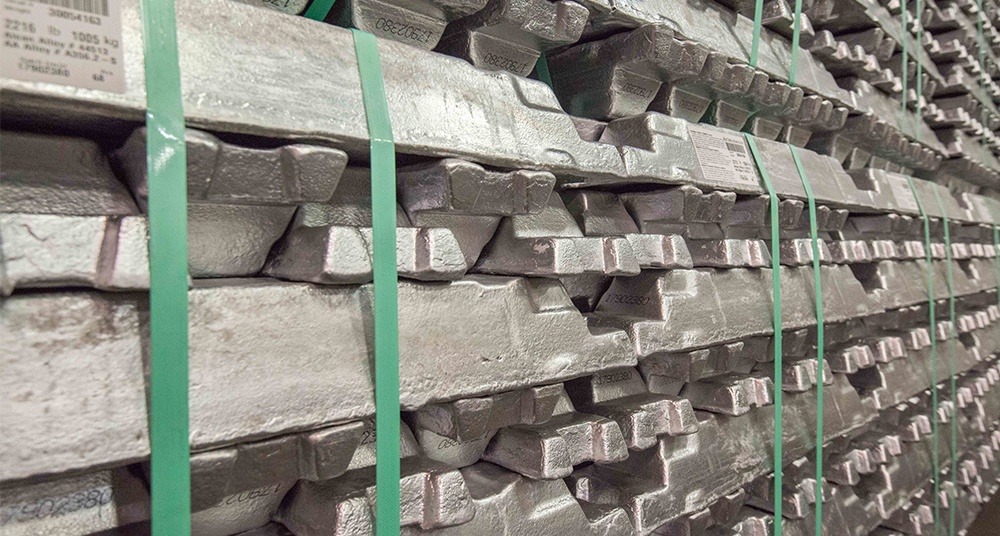Material availability and demand is a hot topic in today’s manufacturing industry. Batesville Products met with Dave Moore, owner and operator of The Foundry Way, a local aluminum ingot supplier and scrap management service for 39 years. In this article, we will share Dave’s valuable market insight and aluminum knowledge.
There are several varieties of aluminum alloys. For example, at BPI we make castings out of A356, a highly versatile food grade aluminum.
Rio Tinto, Canada based aluminum producer who works with The Foundry Way, uses an advanced hydropower damming system to produce aluminum. Did you know that 40% of the cost of making aluminum is electricity? This hydropower system gives a competitive edge in comparison to coal burning smelters.
A key property of aluminum is its recyclability. Aluminum can be recycled repeatedly without losing quality. In fact, since 1888, when aluminum was first developed, 75% of all the aluminum is still in use today!

Throughout the years, there have been many changes that affected aluminum suppliers and foundries.
One major event in the aluminum market occurred in the 1990’s, when NAFTA policies were implemented. As a result of NAFTA policies, many US foundries and casters began to leave the country. Those remaining in the US either acquired competitors, consolidated, or went out of business. This created a ripple effect, reducing the customer base and competition of aluminum ingot and other material suppliers.
Recent unforeseen events have also made a major impact on the manufacturing materials market, impacting 2020. These trends have carried into 2021 and continue to impact our forecasting for the 2022 aluminum market.
Availability of different materials and alloys has been a concern of manufacturers across the country in 2021. For example, permanent molds are often made of steel, but suppliers are struggling to keep up with the demands for steel.
Today, metal and lumber are still tight. But what about aluminum?
Luckily, we are in the USA belt of manufacturing. While the worldwide market may be experiencing demand that outgrows supply, by sourcing materials close by, we haven’t experienced any aluminum shortages.
The Foundry Way sources its material from a North American powerhouse, Rio Tinto. They bring in material by truck or by rail, avoiding widespread port backlog. The Foundry Way has had a constant aluminum supply throughout 2020 and 2021. And what does Dave attribute this to?
“Loyalty goes a long way in this business.”
Especially during these trying times, “we’re going to make sure our customers that have been with us for all these years… get what they need. And Rio Tinto is backing us all the way.”
But, that doesn’t mean the price spike in the market isn’t universal. Aluminum prices have almost doubled in the last 18 months. (Which sounds like a good deal compared to lumber, which has multiplied five or six times).
This is driven by export taxes, consumer demand, and supply chain restraints due to global circumstances. It can also be attributed to efforts to curb emissions from coal powered smelters, ultimately promoting smelters who use alternative power sources such as hydropower.
Recycling does play into the availability of secondary types of aluminum casting alloys, such as 319 or 356.1. Scrap goes back into the system, helping with the availability of secondary materials, but not necessarily on the primary side.
To put it into one sentence, the current market has been labeled with high prices, demand that outpaces supply, supply chain restraints, longer lead times, and labor shortages.
While often overlooked, labor shortages are a glaring issue throughout the manufacturing landscape. Lack of workers hinders many manufacturers from pushing out materials and product.
We expect aluminum availability to continue to be steady in our local market. However, in 2022 we suspect there to be a continued price spike, attributed to energy and labor.
While we don’t see relief of this market craze happening within the next 12 months, especially when you account for offshore policies, we have faith it will balance itself out eventually.
A major shift is currently taking place in the aluminum industry – favoring low-carbon material. “Low-carbon aluminum” refers to aluminum that is produced with a manufacturing process that emits less carbon than traditional aluminum smelting processes. For example, Rio Tinto’s manufacturing process is low-carbon because they use hydropower. As of now, there isn’t a large amount of low CO2 aluminum, but the push for this trend from the automotive industry may change the landscape quickly.
Rio Tinto is always working to tweak or create entirely new types of elements and alloys that help create better parts. For example, they recently worked on a high copper aluminum alloy developed for turbocharger compressor wheels.
Rio Tinto is also currently partnering with Comptech to generate another new aluminum alloy for “advanced technology such as electric vehicles and 5G antennas.”